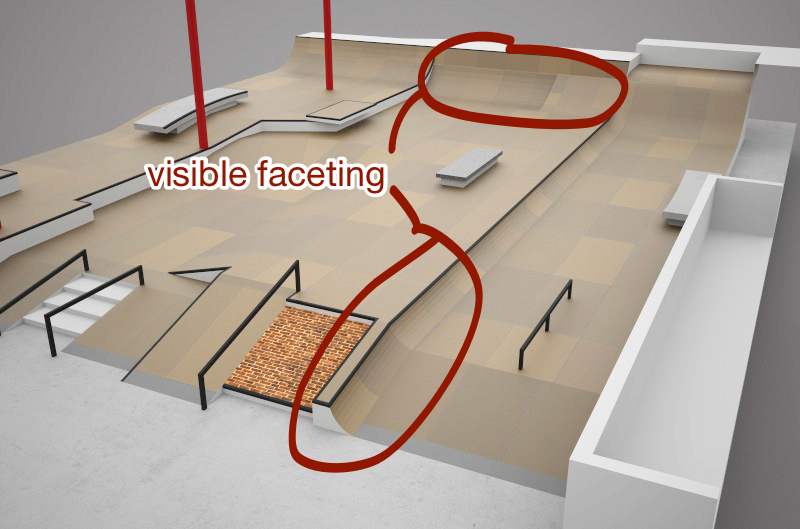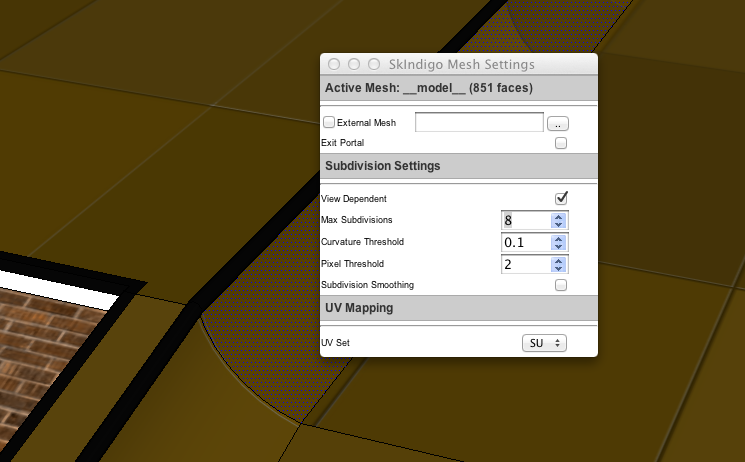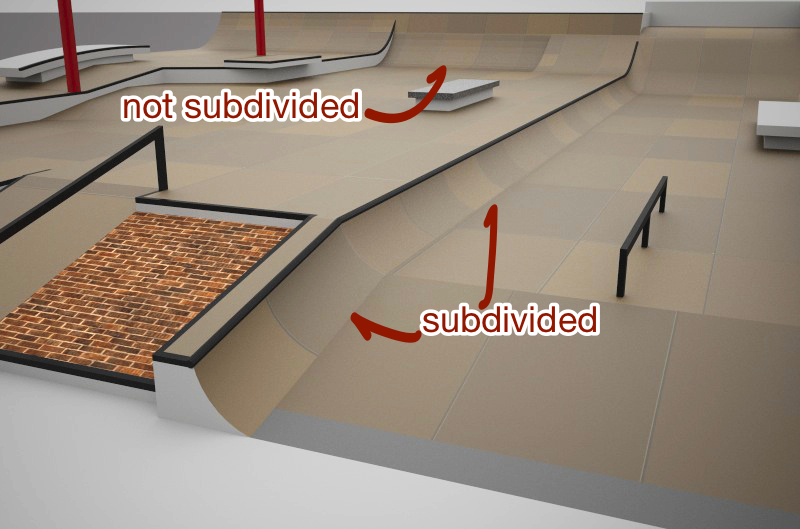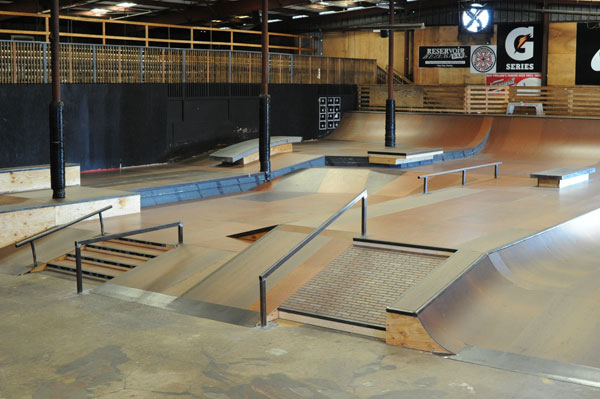FREE Maxwell Render for Sketchup (free version).
-
Actually here is a contest here http://www.maxwellrender.com/index.php/home/maxwell_for_sketchup/competition
-
@unknownuser said:
No, I just get the Get SilverLight box.
I know it's a system fault I just can't track it down.
Hey Rich,
Did you ever get the Silverlight issue resolved?
Best,
Jason. -
hey Jason.. maybe you can help me out with this problem..
i'm setting up a render and this test is showing the facets of the curved surfaces.. it's not a huge deal at 800px but i'm worried about how it would look if i buy the plugin and make larger images..
am i missing a setting somewhere? or any advice on preventing it?
thanks
-
Not yet, but I've nCleaner installed on my machine and I think it's causing the problem.
-
@unknownuser said:
i'm setting up a render and this test is showing the facets of the curved surfaces.. it's not a huge deal at 800px but i'm worried about how it would look if i buy the plugin and make larger images..
am i missing a setting somewhere? or any advice on preventing it?
thanksI see other areas where that is not happening so I would begin by assuming that the edges there have been hidden but not smoothed within SketchUp -- Select all the entities then context click and choose from the menu "Soften/Smooth Edges"... in the dialog make sure "smooth normals" is checked and that the angle is sufficient to smooth the edges in question.
In addition, in the future I would use more segments per curve for anything going through Maxwell -- Maxwell loves high-poly detail and the more segments the smoother things will be. This is particularly true for anything that will get a dielectric (water/glass) or SSS material... in fact when doing glass vases and whatnot I will use circles with a minimum of 180 sides (but often 360 sides) because "normal smoothing" is just a low-poly visual trick that does not work for smoothing profiles, refraction, and caustics.
When I was working on this model I used the BezierSpline Plugin which allows you to set as many segments as you need after you've defined the curve. BTW that model will render fine within this Maxwell plugin and it is very high poly so no need to worry about that (SketchUp may complain but that is a separate issue).
Best,
Jason. -
@unknownuser said:
Not yet, but I've nCleaner installed on my machine and I think it's causing the problem.
Gotcha, I kind of figured it was something like that -- I did want to point out that they have a Silverlight 5 RC you could try as well here http://www.silverlight.net/ (look at the top).
Best,
Jason. -
@jason_maranto said:
I see other areas where that is not happening so I would begin by assuming that the edges there have been hidden but not smoothed within SketchUp -- Select all the entities then context click and choose from the menu "Soften/Smooth Edges"... in the dialog make sure "smooth normals" is checked and that the angle is sufficient to smooth the edges in question.
nah.. i never hide edges..
@unknownuser said:
In addition, in the future I would use more segments per curve for anything going through Maxwell -- Maxwell loves high-poly detail and the more segments the smoother things will be. This is particularly true for anything that will get a dielectric (water/glass) or SSS material... in fact when doing glass vases and whatnot I will use circles with a minimum of 180 sides (but often 360 sides) because "normal smoothing" is just a low-poly visual trick that does not work for smoothing profiles, refraction, and caustics.
that's another nah.. i'm not going to make the curves with more segments.. a couple of reasons..
— the vertices coincide with the framing layout (i build this things irl).. in this case, the segments of the problem area in the back of the image are 8" o.c. while the foreground tight curve is at 5" o.c... there's no way i'm going to make a separate drawing with super high polys just for a render
— Texturing would be a bish!.. in order to get that texture on the curved surface to line up properly, i have to sample/paint the individual segments.. it's already a pain in the neck with the low-poly (well, standard poly) version..
—it renders fine in indigokind of a letdown

-
@jason_maranto said:
In addition, in the future I would use more segments per curve for anything going through Maxwell -- Maxwell loves high-poly detail and the more segments the smoother things will be. This is particularly true for anything that will get a dielectric (water/glass) or SSS material... in fact when doing glass vases and whatnot I will use circles with a minimum of 180 sides (but often 360 sides) because "normal smoothing" is just a low-poly visual trick that does not work for smoothing profiles, refraction, and caustics.
So I've been following this thread with some mild interest, as I'm always looking for good rendering solutions. Do you mean to say that Maxwell ignores the facet smoothing that's done in SU? My experience in Vray for SU is that things improved immensely once that was incorporated into the plugin (1.05 didn't have it, current versions do, it's a noticeable difference, as you can see if Jeff's posted image)
-
No, Maxwell fully supports normal smoothing, however normal smoothing is just a trick -- if you look at the profile of the object you will always the see the low-poly nature of the geometry... there is no way to do anything about that. If you want a smooth profile you will have to create smooth curves.
In addition true dielectric materials will reveal the normal smoothing trickery for what it is because of the way in which caustics (and refraction) depend on actual geometry... there is no substitute for actual geometry when dealing with those issues.
With every regular type of material normal smoothing is more than enough to "fool" the eye -- so long as you do not look too closely at the profile of the curve.
Best,
Jason. -
@unknownuser said:
nah.. i never hide edges..
Some plugins may do that automatically, if you want to PM me the file I can take a look for you and see whats up.
Best,
Jason. -
@jason_maranto said:
No, Maxwell fully supports normal smoothing, however normal smoothing is just a trick -- if you look at the profile of the object you will always the see the low-poly nature of the geometry... there is no way to do anything about that. If you want a smooth profile you will have to create smooth curves.
With every regular type of material normal smoothing is more than enough to "fool" the eye -- so long as you do not look too closely at the profile of the curve.
Best,
Jason.Yes, I'm well aware of the profile issue. So it is possible to have the SU smoothing apply to a regular material face - for example a reflective surface and get a smooth result? It looks like in Jeff's image that the curve face shows the facets.
-
@andybot said:
Yes, I'm well aware of the profile issue. So it is possible to have the SU smoothing apply to a regular material face - for example a reflective surface and get a smooth result? It looks like in Jeff's image that the curve face shows the facets.
Yes, all regular (non-dielectric materials) will be smooth if they are smoothed in SketchUp -- if they are not then there is an issue in the file somewhere which is why I offered to take a look at it... because it is not how it should be -- simply look at the ramp in the upper right hand corner to see what it should look like. Something obviously went wrong with the smoothing information on the other faces at some point.
However, it is still advisable to work with more segments (if you can) when modeling in general as your profiles will always be smoother and more "true-to-life".
Best,
Jason. -
@jason_maranto said:
No, Maxwell fully supports normal smoothing, however normal smoothing is just a trick -- if you look at the profile of the object you will always the see the low-poly nature of the geometry... there is no way to do anything about that. If you want a smooth profile you will have to create smooth curves.
right, i was just wondering if maxwell has a mesh smoothing option.. indigo has this option and it's pretty sweet for cases such as this..

@jason_maranto said:
@unknownuser said:
nah.. i never hide edges..
Some plugins may do that automatically, if you want to PM me the file I can take a look for you and see whats up.
Best,
Jason.ok.. i'll send over the file (with a couple of materials removed to keep the size down.. i'll leave the brown stuff in there though)
but i'm telling you, i know the difference between hidden and smooth edges
-
That would be Whaat's handywork -- he also created the subdivide and smooth plugin and artisan... I'm not surprised he would integrate some of that expertise into the Skindigo plugin

No, there are no subdivision settings within the Maxwell plugin and I would not expect to see any anytime soon either -- the closest thing is the displacement subdivision options which is really done for a different reason. With Maxwell what you have modeled in SketchUp is what you get back out of Maxwell (with the exception of displacement).
Best,
Jason. -
Hey Jeff,
Thanks for the file -- I selected the faces in Question and re-smoothed (or "recalculated") them by just moving the slider and as you can see the problem was resolved.

BTW, I live in Tampa so it's appropriate this is a model for there

Best,
Jason. -
Nice!

When I have a free moment I definitely intend to do a trial of the plugin.
-
@jason_maranto said:
Hey Jeff,
Thanks for the file -- I selected the faces in Question and re-smoothed (or "recalculated") them by just moving the slider and as you can see the problem was resolved.
[attachment=2:3tfth346]<!-- ia2 -->Tampa20111_render_03.jpg<!-- ia2 -->[/attachment:3tfth346]BTW, I live in Tampa so it's appropriate this is a model for there

Best,
Jason.oh.. nice.. back in business

i tried subdividing the curved surface with subdivide&smooth (only subdivided.. not sub&smooth) then softened the coplanar edges which were created and the surface rendered good..
[though reading your above post, i probably just 'recalculated' the smoothing and the subdivision had little or no effect]regardless, it's a non-issue now.. back to learning this plugin

[attachment=1:3tfth346]<!-- ia1 -->subD.jpg<!-- ia1 -->[/attachment:3tfth346]
———————————
re: Tampa.. i was just down there last week.. (i'm there every year around this time).. just rebuilt the spot course for 2011 so i'm using that drawing to learn this plugin.. here's the real thing.http://www.skateparkoftampa.com/spot/a.aspx?ID=1673
[attachment=0:3tfth346]<!-- ia0 -->cd11DSC_0994-1.jpg<!-- ia0 -->[/attachment:3tfth346]


-
Isn't it possible to render a night scene with artificial light? Have played around with the plugin, but haven't found any options to set a night scene. Am I missing st?
-
For a night scene (where you would see the sky) you would want to use a HDR/EXR Image Based Lighting solution with Maxwell -- a brand I would reccomend for Night Skies is http://www.hyperfocaldesign.com/.
Alternately if the appearance of the sky is not important you can set up the Sky Dome environment with custom settings to mimic a night sky ambiance (particularly good for city skies where light pollution overpowers the stars).
Beyond that, lighting a scene with emitter materials is pretty standard and they work the same in any environment (including indoors).
Best,
Jason. -
@unknownuser said:
Interested to see what Brodie and Davidh make of this. They're the only members I know that are maxwell users.
I'm a bit late to the game here. I don't have a lot to say about it. I think for Maxwell and for SU Free users it's superb. 800x800 max output isn't bad. I think that's comparable to Podium's free version isn't it? It's probably the highest quality and best integrated free renderer out there.
But for me, personally, it has no impact. It's sort of like Maxwell lite in that it's just like the full version minus a few features. There's nothing different or extra in there that matters to someone with a Maxwell license.
I'm going to start a separate thread though regarding the very real possibility that Maxwell will make a huge leap ahead with regards to SU's poly limit...
-Brodie
Advertisement







